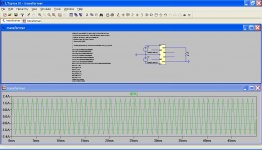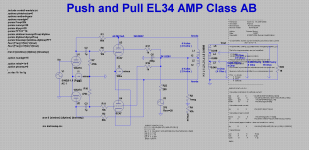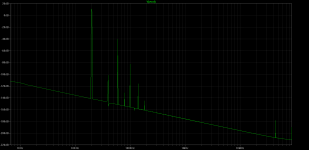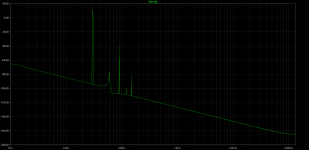This is te link to a 4E27 triode-strapped SPICE: http://ja1cty.servehttp.com/4E27/spice.zip
Unfortunately, I am not sure how JA2DHC's triode curves were derived, but I was not able to use his triode data to create an usable pentode model, the result was way off from the datasheet.
The attached ZIP file from Yahoo Groups only contain generic transformers, you still need to fill in the actual component values (LRC), a much more useful library is provided by Mr. McLean on this thread.I also found a zipje with some output transformers.
Not sure if Mr. McLean provided instructions for his worksheet, but IIRC, on the upper left corner, you select the transformer number, and the code is automatically generated below, which then can be cut, paste and saved as the SPICE file (or pasted directly into the LTSpice ASC schematic).
Whatever instructions he provides the are bluryNot sure if Mr. McLean provided instructions for his worksheet, but IIRC, on the upper left corner, you select the transformer number, and the code is automatically generated below, which then can be cut, paste and saved as the SPICE file (or pasted directly into the LTSpice ASC schematic).
I know this the ones that i put in a zip is working.
I found the *.ASY files and i got it to work
With some changes in the XLS file he used for a decimal a , this should be a . ( point )
Finally had a chance to take a look at Mr. McLean's worksheet, the first tab contains very detailed instructions on how to use the worksheet to generate the models. And on each of the tabs, there is a corresponding image that's needed for the SPICE model - you need to make these symbols yourself unless you can find them on the net, or modify existing transformer symbols that you may have to match up the pin names.
I found the *.ASY files and i got it to work
With some changes in the XLS file he used for a decimal a , this should be a . ( point )
I've used Robert McLean's spreadsheet before and haven't had a problem. Can you point out where in the spreadsheet you found the error?
I've used Robert McLean's spreadsheet before and haven't had a problem. Can you point out where in the spreadsheet you found the error?
When i use the *.asy models and convert the .SUBCKT text to a file or drective he is using something like this
KALL LP1 LS1 LS2 LP2 LA1 LA2 LA3 0,998434750532354
Here you zie at the end that for the decimal he uses a , ( comma ) but this should be a . ( point )
Maybe this is a program fault becouse my windows is set on dutch
When i use the *.asy models and convert the .SUBCKT text to a file or drective he is using something like this
KALL LP1 LS1 LS2 LP2 LA1 LA2 LA3 0,998434750532354
Here you zie at the end that for the decimal he uses a , ( comma ) but this should be a . ( point )
Maybe this is a program fault becouse my windows is set on dutch
Yes, I believe this is the case, you can of course change the default European "," decimal point to "." in Excel.
OK, it's not a vacuum tube -- perhaps we can convince the folks at PEAK to allow use of their GUI -- this is a curve of the LU1014 Power JFET, gm is about 80mS
An externally hosted image should be here but it was not working when we last tested it.
Hi
this is try of simulation EL34 amp, very good quality, indeed.
Attached asc file for play with (based on a file with EL12 amp).
Similar local nfb I used in one of my amps with succes.
Here to see more on inverters CCS Amplifier & Aikido Active Long-Tail Phase Splitters ,
cheers
Attachments
=nl3prc;3984474]Why do you feed the 12ax7 with the anode line of the 6ca7 this should be better this can give to mutch feed back.
my target was full power at ~2Vpp input, like from most cd playres, or other sources,
besides it is not too much nfb untill the device not oscillates
this configuration gives euphinic sound end extraordinary deep of the soundstage.
this is link for real built amp: http://www.diyaudio.com/forums/tubes-valves/78158-my-last-project.html#post898445
And next time you post a ASC files also iclude the the lib or inc files
they were from your post http://www.diyaudio.com/forums/tubes-valves/243950-vacuum-tube-spice-models-48.html#post3977202
Missing files are dmtriodep.inc and cordell-models.txt those files i newer used in my sim
please find attached
Attachments
I have standard directives for the simulations and I copied them for simulations, yes cordell-models.txt is not necessary.
20kHz is for the same reasons, you can easy change it to any frequency you want.
30Hz sim is not bad too.
20kHz is for the same reasons, you can easy change it to any frequency you want.
30Hz sim is not bad too.
Attachments
Last edited:
- Home
- Amplifiers
- Tubes / Valves
- Vacuum Tube SPICE Models



